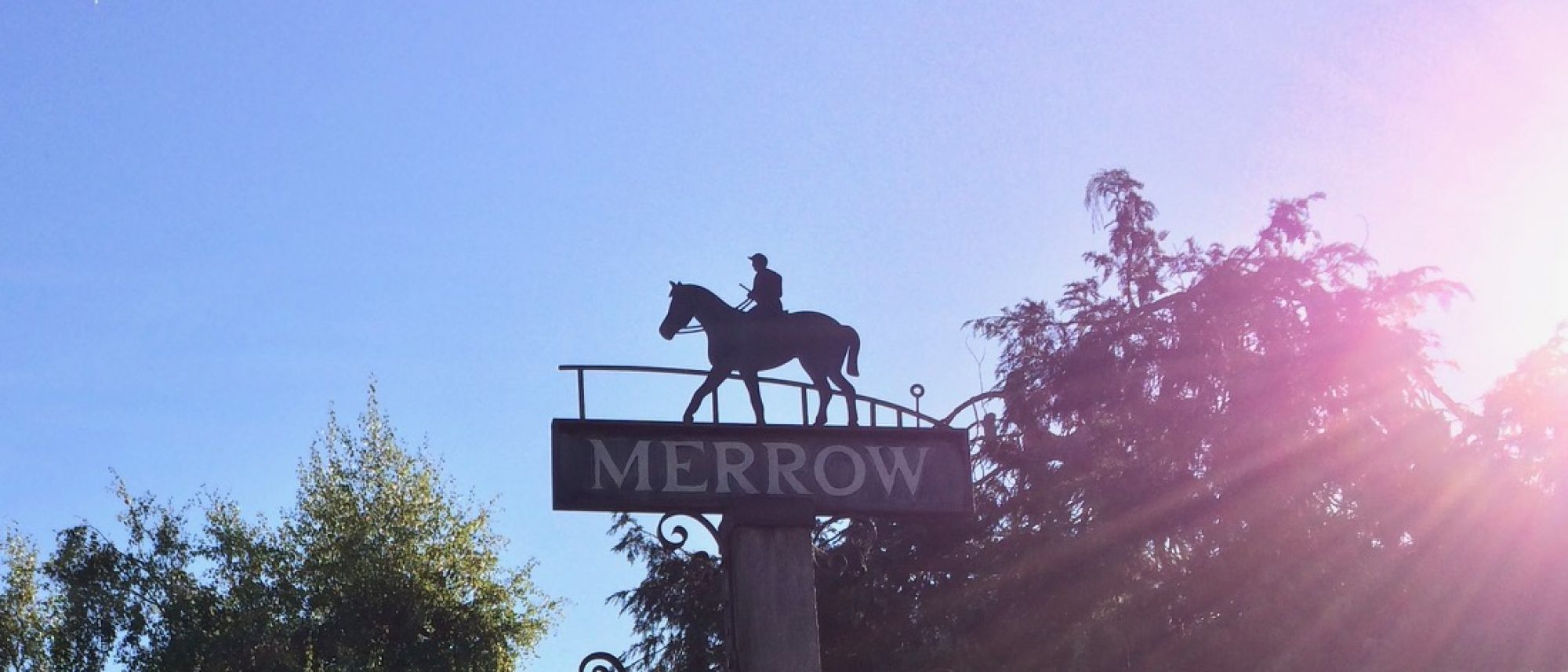From 1701 to 1870 Guildford Races, flat and jump racing, were held annually in Whitsun week on Merrow Downs. The first official race was held in 1727. OS map from 1871.
Map with course and Trodds Lane marked
The two mile racecourse ran along the north side of what is now the 10th fairway of the golf course, up past the north side of the 10th green and round towards the 14th green. It crossed the 3rd fairway near its teeing ground and ran eastward, parallel to the 3rd fairway and just to the south of it. The footpath below the ridge follows the line to Trodds Lane. It swung north east before crossing Trodds Lane, ran some 200 yards south east of the 7th green to within 45 yards of the Clandon/Newlands Corner road, swung north west round the ancient yew trees and back along what is now a diagonal path and right of way west south west across the 8th fairway, crossed Trodds Lane, ran up the 10th fairway and finally, swung round to the east of the chalk pit and ‘through a part railed in to the stand to the termination’. The grandstand is believed to have been on the south side of the course at its western end a few yards east of the 12th green. There is all oil painting attributed to James Seymour (1701-1752) in the Green Drawing Room at Clandon Park titled “Harriers on the Downs near Guildford” which shows the stand and a small part of the course near the finish.
William III gave a King’s Plate of 100 guineas. This lapsed under Queen Anne but was renewed under George I. It was renamed the Queen’s Plate in Victoria’s reign. Before the institution of the Derby (1780) and the Oaks (1779) it is doubtful whether Epsom was more important than Guildford or Egham. The King’s Plate at Guildford was one of only eleven King’s Plates which were raced for in the country. The others were at Epsom, Newmarket (3), Nottingham, Lincoln, Winchester, Lewes, York and lack Hambleton (Yorkshire).
The famous stallion Eclipse won the King’s Plate at Merrow in 1770. He only raced for two seasons in 1769 and 1770 and won all his 18 races, with ease, under the guidance of his well known jockey, John Oakley. Eclipse went to stud after he retired from racing in 1770 and sired 3 Derby winners. He died from colic at the age of 25 and his skeleton had been preserved at the National Horseracing Museum in Newmarket. It is now on display at the Royal Veterinary College, near Hatfield. RVC News and Events
Racing at Guildford began to decline from the 178O’s in line with a general trend throughout England. There was a revival after the Napoleonic Wars, but this did not extend to Guildford probably because Epsom and Ascot were more accessible and popular and because Guildford’s influential supporters had died out and the upkeep was too much for those who were left. Racing may have kept going because of the Queen’s Plate race, the last of which was held on Tuesday 26 April 1870. The grandstand, a wooden structure, was pulled down earlier in 1854 and burned outside Holy Trinity Church in one of the 5th November Guildford Guy ‘riots’ which were a fairly regular annual occurrence about that time.
